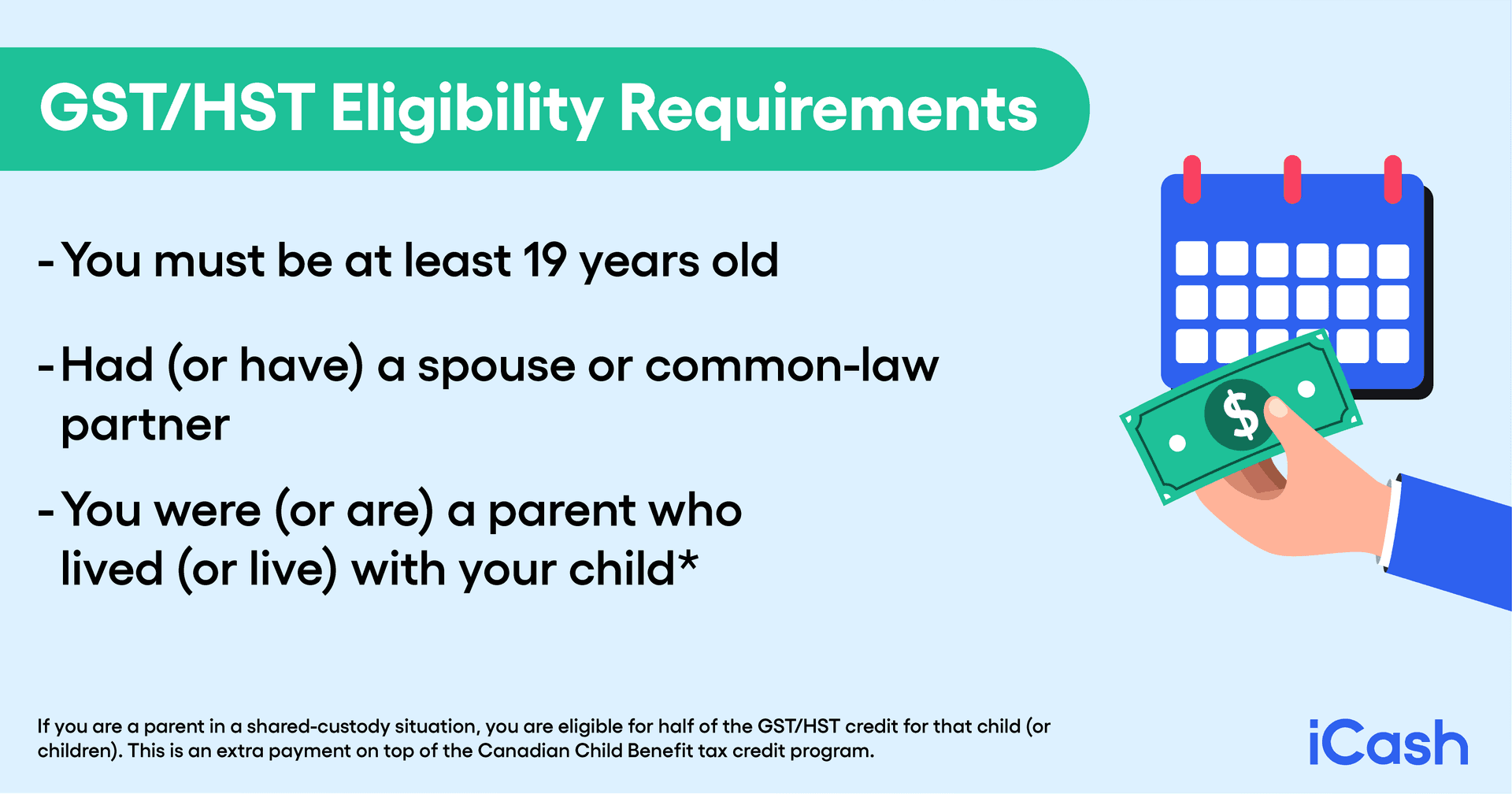Guide to GST/HST Credit in Canada
Thanks to the Canadian government, if you regularly file your yearly taxes in Canada, you are eligible to receive the GST/HST credit: a tax-free quarterly payment. This credit was created to aid low-income families and individuals by offsetting the GST and HST paid on goods and services. Which means you essentially get a portion of those taxes back when you file. In Canada, there are also provincial and territorial programs for other payment programs related to GST and HST taxes.
In this guide to GST/HST credit in Canada, we’ll explore who is eligible, what that eligibility means, how much you can potentially get back, and how you can benefit from this tax-free payment from the government.
• Who is eligible for GST/HST Credit in Canada?
• How do You Apply for GST/HST Credit in Canada?
• GST/HST Credit Payment Dates 2023
• Provincial and Territorial Programs for HST/GST Credit in Canada
• How Can You Benefit from the HST/GST Credit in Canada?
Who is eligible for GST/HST Credit in Canada?
There are a few criteria you need to meet in order to be eligible for GST/HST credit in Canada. Mainly, if you are a registered Canadian resident for income tax purposes the month before, and the beginning of the month when the CRA (Canadian Revenue Agency) would make a payment.

In order to qualify to receive the GST/HST credit in Canada, you also need to be one of the following:
• At least 19 years old
• Had (or have) a spouse or common-law partner
• You were (or are) a parent who lived (or live) with your child.
And remember, if you are a parent in a shared-custody situation, you are eligible for half of the GST/HST credit for that child (or children). And this is an extra payment on top of the Canadian Child Benefit tax credit program.
The GST/HST credit is meant to help lower income families and individuals. If you are on your own and you make more than $48,012 annually, you are not eligible to receive the tax credit. And if you are a married couple with four children, your annual net income cannot surpass $63,412 in order to qualify. The Canadian government breaks down specific income requirements and limitations on their government website pertaining to eligible family income levels.
How do You Apply for GST/HST Credit in Canada?
In most cases, as long as you file your yearly taxes you are eligible to receive the tax-free payment from the government, even if you have no income to claim from that previous year. There is no specific form for the tax credit program, your filed taxes are your application.
The Canadian government looks at your family net income as well as the number of children you have in order to determine the amount you are eligible to receive four times a year.
According to the Canadian Revenue Agency, the maximum GST/HST credits for 2022 are:
• Single: $456
• Married/Common-law: $598
• For each child under the age of 19: $157
Now, remember, these tax credits are sent in or electronically transferred four times a year, providing you complete your yearly tax returns either online or with a trusted tax preparation company.
GST/HST Credit Payment Dates 2022

• January 5, 2022
• April 5, 2022
• July 5, 2022
• October 5, 2022
While these tax credit payments are meant to alleviate financial stress for lower income families and individuals, sometimes emergencies still crop up. That’s when Canadians who find themselves in a bind before the GST/HST credit payment is due to come in turn to lenders online to apply for an easy cash loan to help hold them over.
Provincial and Territorial Programs for HST/GST Credit in Canada
Now, there are also specific tax credit programs that differ from province to province and these annual payments are added to the HST/GST credit amount you would already be receiving. You do not have to apply separately for these specific programs, you will automatically be enrolled in them once you qualify for the tax-free payment plan from the Canadian Government.
Here are the provincial payment programs and how much you could receive annually from each:
BC climate action tax credit:
$193.50 for an individual
$193.50 for a spouse or common-law partner
$56.50 per child
$193.50 for the first child in a single parent family
Saskatchewan Low-Income Tax Credit (SLITC):
$358 for an individual
$358 for a spouse or common–law partner (or for an eligible dependant)
$141 per child (maximum of two children)
Max annual credit of up to $998 per family
Ontario Sales Tax Credit:
Single: $324
Married or Common-Law: $324
Per child: $32
Yukon Government Carbon Price Rebate:
Yukon Government Carbon Price Rebate
$372 total if you live in Whitehorse; or. $409.20 total if you live outside of Whitehorse.
Northwest Territories Cost of Living Offset:
Amounts will increase to $473 for each adult and $525 for each person under 18 years of age.
New Brunswick Harmonized Sales Tax Credit (NBHSTC)
The NBHSTC is fully funded by the Province of New Brunswick and aims to pay low- and modest-income households a tax-free amount to help offset the increase of sales tax in the province.
• Single: $300
• Married or Common-Law: $300
• Per child: $100
• In a single-parent home, the first child receives: $300
PEI Sales Tax Credit
The PEI sales tax credit is fully funded by the Province of Prince Edward Island and aims to pay low- to moderate-income households a tax-free amount to help offset the increase of sales tax in the province.
• Single: $110
• Married or Common-Law: $55
Nova Scotia Affordable Living Tax Credit
The province of Nova Scotia also offers a tax-free payment offered to residents with low to moderate incomes to help offset the increase in the HST and to help increase income for families (and individuals) in need.
• Single: $255
• Married or Common-Law: $255
• Per child: $60
Newfoundland and Labrador Income Supplement
This tax-free payment fully funded by the Newfoundland and Labrador provincial government is an amount that is calculated based on your adjusted family income and current family situation. The payment is meant to help low income singles and families, as well as persons with disabilities, who may feel pressure from the provincial tax regulations.
• Single: $450
• Married or Common-Law: $510
• Per child: $200
Newfoundland and Labrador also have a senior’s benefit program:
Single senior: $1,444
Married or Common-Law: $1,444
How Can You Benefit from the HST/GST Credit in Canada?
The benefit of the GST/HST credit program for Canadians is that it means a little extra money in your pocket four times annually that you know is coming your way, no matter what. As long as your taxes are filed on time and you meet the governmental criteria for receiving the tax-free payment, you can rest assured it will arrive via mail or via direct deposit in your bank account. As for the provincial and territorial programs, those have different pay dates throughout the year.
You can properly plan a budgeting strategy to effectively use to pay off debts and/or save your GST/HST credit payment throughout the year to help you reach financial stability and creditworthiness down the road.
As you can see, the Canadian government has some excellent programs across the nation to help individuals and families financially throughout the year. However, even with these aid programs, Canadians may still find themselves in unexpected situations that require immediate cash. That’s when turning to a trusted online lender like iCash to apply for an instant loan can help with monthly bills and other expenses.
About the author




